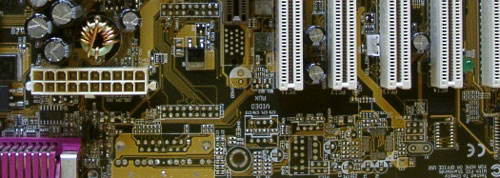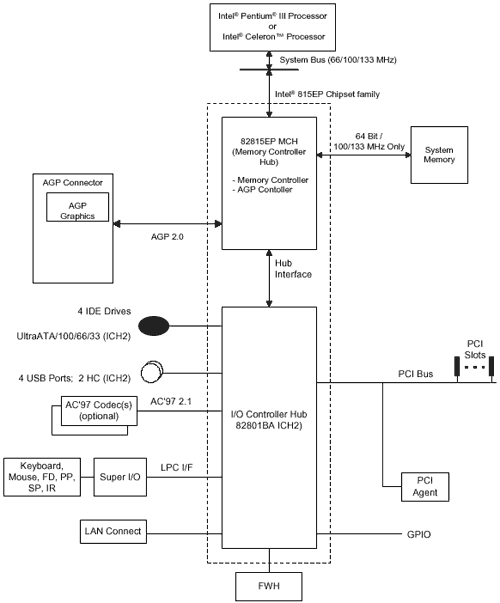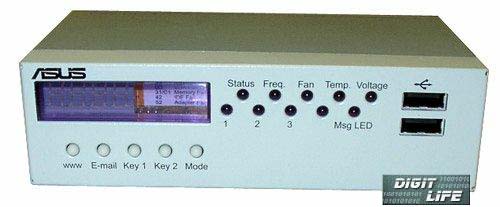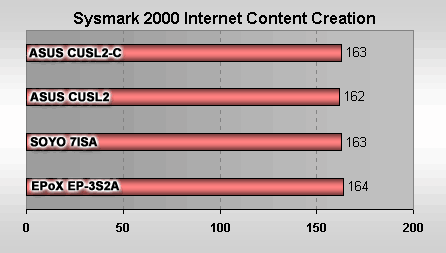 |
||
|
||
| ||
Now we can see how computer and car industries are overlapping more and more; in both fields one has to use similar marketing steps and ways to reduce costs of projecting and production being in the tough competition. Take for example Jaguar company that is part of the Ford Concern - it's high class English autocar, a real respectability. But for the base of a small Jaguar which is going to compete against Mercedes C-class or the third BMW they took chassis of Ford Mondeo of the last generation - this car stands much lower than Jaguar. But this step allows saving a lot of money when developing a platform for a new Jaguar. This will make possible either reduce the price or raise sales volume or increase percentage of profitability of each sold car. On the other side, some Jaguar fans may not like the car with a reputation tarnished by the transport for housewives... In a computer industry everything seems simpler. Nobody would turn its back on a board that was created on the base of uniform PCB, with a lot of non-unsoldered ports, chips and expandable slots. But on the base of this board one can realize infinite number of versions of the same board, and the customer will choose exactly what he needs. That means that CUSL2-C is not a victim, but a an example of what all boards will come to in the nearest future - ASUS is again a leader. You might argue that today many manufacturers use such approach - for example, they provide a space for the second BIOS chip and so on, but in such a scale it's the first time. Look here:  So, today we have the CUSL2-C board from ASUS company, the first board on i815EP chipset, probably the most expectable and therefore it collected a number of rumors.  In fact the difference from i815E is very slight, but considering undoubted magnitude of the new chipset it is worth closer look at. i815EP chipset i815 turned not to be exactly that chipset which was expected by Intel fans. First it supports only 512 MBytes memory, it lacks ECC support, and the performance gives up hope - the level set by BX hasn't been beaten. Besides, a two year old integrated graphics core only increased complicity of the North Bridge GMCH, causing high percentage of screening and big price of the chipset and mainboards based on it. Meanwhile, VIA Apollo Pro133A was beyond any competition providing an optimal ratio "price/possibilities/performance", and therefore Intel decided on releasing a i815EP chipset having a North Bridge completely compatible with its predecessor though without an integrated graphics. It was known a long time ago about this chipset introduction, and Intel fans expected a lot of innovations, such as 1.5 GBytes memory support, possibility to use the memory at 133 MHz with processors that utilize 100 MHz bus, incredible performance... Though in general, the i815E chipset is not that bad, and Intel being tired of infinite problems has just cut a graphics core out of the North Bridge leaving all others without alterations.  Let's dive into specs of the North Bridge i815EP MCH (Memory Controller Hub):
Integrated controller SDRAM: Integrated Accelerated Graphics Port (AGP) interface: Supported South Bridges: Package and voltage:
As you can see it's incredible similar to its older fellow - i815E GMCH (Graphics & Memory Controller Hub). Well, it very "easy" money! First, they saved on new chipset project; second, they dug out non-standard GMCH (the main reason of screening is hidden exactly in the graphics core), disabled integrated video in BIOS, and started to sell it. And no problems in delivery - until real MCH appear in large quantity, crippled GMCH will cover the shortage of the former. Specification
For this promising board ASUS has developed a box of pleasant green color with proud writing "CUSL2-C Motherboard". The complete set includes cables (FDD cable, 40-wire IDE cable, 80-wire UltraDMA66/100 cable) and brackets with the second COM-port. On the bracket two additional USB-ports are mounted. The CD contains drivers, utility of monitoring ASUS PC Probe, anti-virus program Trend PC-cillin, Cyberlink PowerPlayer SE, Video Live Mail Retail and PowerDVD Trial. Unfortunately, ASUS didn't pay required attention to the user's manual and unfortunately left a lot of words on an integrated video that GMCH featured. And of cause a sticker with Pegasus - "Powered by ASUS". BoardNow let's consider main differences of CUSL2-C. The CUSL2-C board is based on the same PCB as CUSL2. First up the differences from CUSL2. Instead of AGP Pro slot there installed a usual AGP - and indeed, video chips are being transferred little by little on the finer technological process. And video cards are becoming not so exacting as earlier, this will allow using just a usual AGP without Pro.  They took out the second CNR, a thin slot of half-width which shared the space with a thin sixth PCI, the pins of which are more sensitive to the mechanical force; you shouldn't take in/out the cards out of this slot. VGA connector of integrated video disappeared as well, but the layout didn't allow the second COM-port to be put on its regular place - it 's left on the front edge of the board. USB hub was been taken out as well - 4 ports are more than enough. Another problem concerns the board's complete set. So, what does it lack of? We don't have practically free sound in AC'97 codec, 3 audio connectors - Line-In, Line-Out and Microphone, and a connector for a joy-stick. They seems to consider that a customer of CUSL2 or CUSL2-C doesn't need a cheap sound, in any case it would buy something like Live! or Vortex2. Interestingly that CUSL2-C doesn't work together with PPGA Celeron which can be found on the market from 366 to 500 MHz. To determine why they excluded this option we should look back. ASUS had 2 legendary boards: an aging P55T2P4 on Intel HX, and currently alive P3B-F. <Q>: Will CUSL2-C be able to replace P3B-F board? <ASUS>: Yes, it will. But only in the upper market segment - for FCPGA .18 micron processors. And for the middle and low segments - there is CUBX-E (ATA100, 5USB), an advanced version of CUBX board, with which we recommend using PPGA Celeron. As for stability of work, there is nothing to complain about. In voltage pulse converters there installed 11 LowESR capacitors of 1500 uF, part of which are located close to the processor socket. So if you are an overclocker you have to look for a good square cooler. By the way, the overclocking of the reference Coppermine 700 MHz was not very good - 135 * 7 = 945 without voltage increase, and 136 * 7 = 952 MHz with 0,1 V increment. But it is probably this definite sample to blame. And of cause, the CUSL2-C board, alike CUSL2, supports iPanel.  And now let's turn to the performance of the board. PerformanceThe following equipment helped us to estimate the board's efficiency:
Software:
  The performance is quite decent, not worse than that of CUSL2. It is probably thanks to lack of integrated graphics, or it might be BIOS that influenced, but on the other hand the gap is not so big, and the performance difference might be caused by measurement error. ConclusionSo, the flagship model of ASUS on the chipset from Intel got rid of integrated video and some other unnecessary things, lost 20-25 USD, and now it's ready to fight against competitors in order to win users' hearts. So, meet ASUS CUSL2-C! Highs:
Lows:
Write a comment below. No registration needed!
|
Platform · Video · Multimedia · Mobile · Other || About us & Privacy policy · Twitter · Facebook Copyright © Byrds Research & Publishing, Ltd., 1997–2011. All rights reserved. |